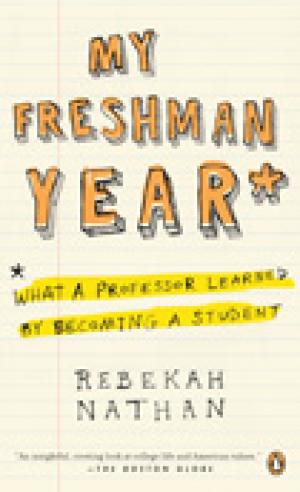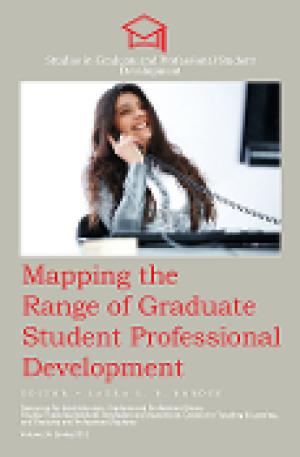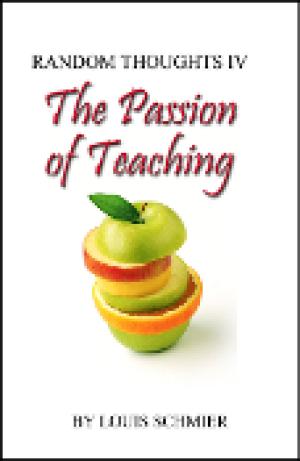Resources
This article elucidates theoretical underpinnings for the use of one’s self in the pastoral theological classroom. The contemplative bow is developed as a capacious metaphor to describe appropriate self use and its necessary importance in the teaching and learning of pastoral arts in a theological curriculum. Central to the argument is the assumption that effective teaching and learning in pastoral care emerges from awareness and knowledge of self as well as letting go of self in beneficial service with others. Analytical engagement of educational, theological, and psychological theory informs practice for the professional school classroom.
What happens when a class assignment becomes a source of controversy? How do we respond? What do we learn? By describing the controversy surrounding an assignment on religion and representation, this article examines conflict’s productive role in teaching about New Religious Movements (NRMs) and religion. It suggests that we consider how our personal and institutional dispositions toward conflict influence our pedagogies. Moreover, it urges us to consider how teaching conflicts within and/or between disciplines can enhance our learning objectives and stimulate students’ ability to think critically.
The purpose of this essay is to offer a survey of religious studies capstones from twenty-nine U.S. colleges and universities, to identify the most common frustrations about the capstone, and to observe how departments resolve such frustrations. I conclude that the most successful capstones -- in terms of students’ performance and faculty satisfaction -- are those that are carefully linked to their department’s major curriculum, pedagogies, and staffing, that set out to achieve a reasonable set of objectives, and that are aligned with their institutional mission, culture, and expectations for assessment. Yet, I argue that it is becoming increasingly difficult to design our capstone experiences according to the above principles because of the proliferation of departmental and institutional pressures we presently face. Finally, I offer some guidelines by which we might devise or revise our capstones to alleviate some of the most common pressures.
This article introduces English for Bible and Theology (EBT), an inherently interdisciplinary field that merges English language learning with the content of biblical and theological studies in a context that is, by nature, cross-cultural. Within this collaboration there exists the possibility not only to enable theological study, but also to enhance it through a focus on personal meaning and its communication, both of which are foundational to the communicative language classroom. That is, EBT seeks both to aid students worldwide in attaining the specialized language and cultural proficiency necessary to access English theological resources and to provide a community in which students can connect theological content to their lives. It is this second aim that provides EBT its relevance across a range of theological contexts, as native English-speaking students likewise stand to benefit from the application of EBT’s principles.
This article explores assignments as a core teaching practice essential to integrating the cognitive, personal, and professional identities of seminary students. These core practices emerge in seminary curricula where there is a strong focus on the teaching of canonical texts and a goal of achieving textual mastery. We propose that carefully chosen and constructive assignments achieve the kind of integration necessary for building content knowledge and the professional, spiritual, and religious identities of our students. While the difference between the educational goals of clergy-training in a seminary and training graduate students in the academy can be sharp, we argue here for ways to make that contrast both productive and generative.

A revealing look at the college freshman experience, from an insider's point of view. After fifteen years of teaching anthropology at a large university, Rebekah Nathan had become baffled by her own students. Their strange behavior—eating meals at their desks, not completing reading assignments, remaining silent through class discussions—made her feel as if she were dealing with a completely foreign culture. So Nathan decided to do what anthropologists do when confused by a different culture: Go live with them. She enrolled as a freshman, moved into the dorm, ate in the dining hall, and took a full load of courses. And she came to understand that being a student is a pretty difficult job, too. Her discoveries about contemporary undergraduate culture are surprising and her observations are invaluable, making My Freshman Year essential reading for students, parents, faculty, and anyone interested in educational policy. (From the Publisher)

Click Here for Book Review Abstract: Here is a new text that fulfills an emerging need in both higher and public education and stands to break new ground in addressing critical skills required of graduates. When working on their last book, It Works for Me, Creatively, the authors realized that the future belongs to the right-brained. While Daniel Pink and other visionaries may have oversimplified a bit, higher education is ripe for the creative campus, while secondary education is desperately seeking a complement to the growing assessment/teach-to-the-test mentality. You don’t have to study the 2010 IBM survey of prominent American CEOs to know that the number one skill business wants is students who can think creatively. To meet the demand of new courses, programs, and curricula, the authors have developed a 200-page “textbook” suitable for secondary or higher education courses that are jumping on this bandwagon. Introduction to Applied Creative Thinking, as the title suggests, focuses not on just developing the skills necessary for creative thinking, but on having students apply those skills; after all, true creative thinking demands making something that is both novel and useful. Such a book may also be used successfully by professional developers in business and education. For this book, Hal Blythe and Charlie Sweet are joined in authorship by Rusty Carpenter. He not only directs Eastern Kentucky University’s Noel Studio for Academic Creativity but has co-edited a book on that subject, Higher Education, Emerging Technologies, and Community Partnerships (2011) and the forthcoming Cases on Higher Education Spaces (2012). Introduction to Applied Creative Thinking is student-friendly. Every chapter is laced with exercises, assignments, summaries, and generative spaces. Order copies now or contact the publisher for further information. (From the Publisher)

Click Here for Book Review Abstract: This edited book series serves as a guide to the study of improved training, employment and administration of graduate and professional student development programs. A new publication that addresses a critical need in higher education. The series is designed to highlight all aspects of professional development of graduate and professional students. (From the Publisher)

Let’s Do the Hokey Pokey! A few years back, George Will wrote that what we choose to believe, how we dream to live, how we strive to make those ideals become reality, we make self-validating. In that spirit, I’m going to talk about one of my self-evident truths, which I choose to believe, how I dream to live, how I strive to make it and other allied self-evident truths my reality. In academia, there is something that is often so deadening that it sucks the life out of teaching and learning, something so often depressing that it reduces focus to information gathering and transmission and exiles people to unnoticed corners, something so bland that it is devoid of emotional intensity, something so stagnating that it doesn’t stir the imaginative and creative juices. That something is passion. Now, I am not talking about being passionate about or dedicated to one’s discipline or to the practice of research and publication. I am talking about being passionate about teaching and being dedicated to each student’s learning. So, here is my take on the importance of passion in education, on what I call “hokey pokey teaching.” And, it starts like this:   You put your whole self in; you put your whole self out; you put your whole self in; and you shake it all about. You do the Hokey-Pokey, And you turn yourself around That’s what it’s all about!   Now that is passion! If you have ever danced the Hokey Pokey you know what I mean. It’s really an exciting experience. And, Hokey Pokey teaching! That’s what it’s all about! (From the Publisher)
This paper explores how adult learners in a college composition course resisted pedagogies and teaching strategies designed to critically examine student and teacher assumptions about classism, racism, and sexism as well as other oppressive structures and discourses.